
6 minute read
The patient’s need: Economic aesthetics and functionality. By Daniel Lavrin, Dental Technician and Denturist
By Daniel Lavrin, Dental Technician and Denturist
Advertisement
Listening to what patients want and need is a crucial factor for a successfull rehabilitation. When it comes to dentures, many older patients are looking for an economic solution. On the other hand, what they don’t want, is a denture that lacks functionality and aesthetics. The following user report profiles how to accomplish efficient and economic aesthetics and functionality with an established treatment protocol and denture teeth of choice.
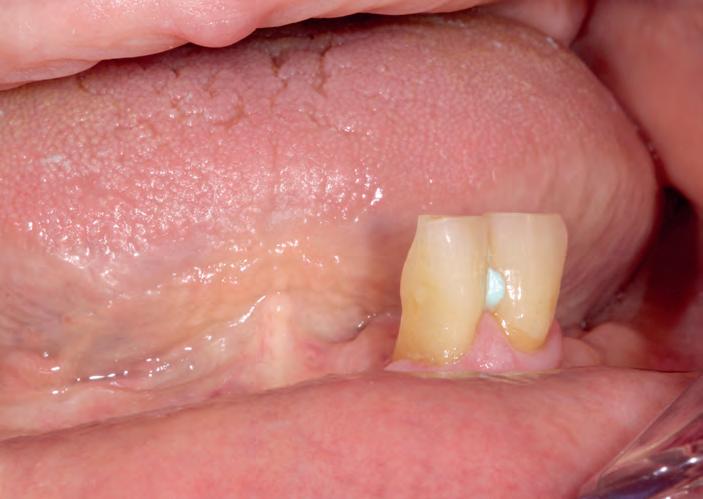
THE PATIENT’S SITUATION
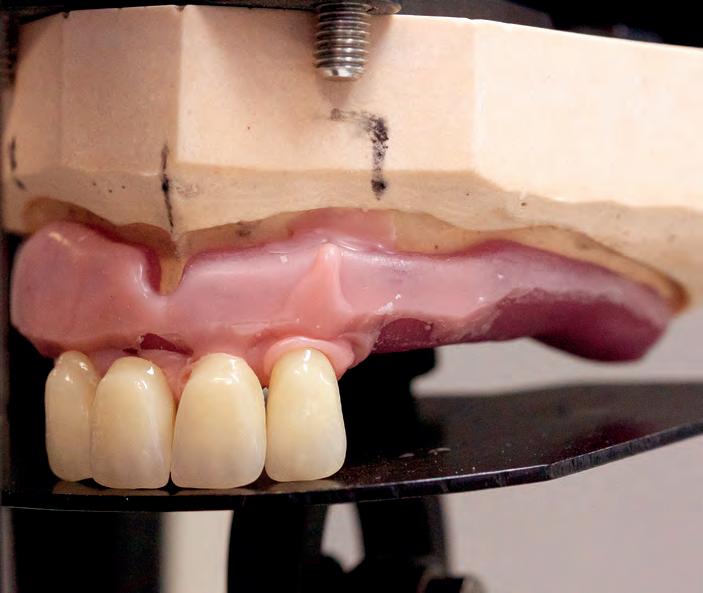
A 72 year-old female patient presented in the office because she could not eat properly with her removable rehabilitations. The partial denture in the lower jaw broke several times and was uncomfortable and unstable. Because of that she stopped wearing it. Despite the age-appropriate bone atrophy, the remaining teeth, 32 and 33, did not show any signs of inflammation. Tooth 32 had a mobility of one. The patient wanted to keep both teeth and refused implants, which would have distributed the forces more evenly. The disadvantages of an uneven load and the accelerating effect on her remaining teeth were explained. In case of necessary extractions in a later stage, an easy denture teeth addition to the new partial denture could be provided, which was satisfactory to the patient. She was currently only using the full denture in the upper, which did not function well, as the occlusal forces were unbalanced. She desired an improvement of aesthetics and eating conditions with new rehabilitations. Her limited budget made an economic solution necessary. Based on these factors, VITA Multi Functional Teeth (VITA MFT) were chosen for the new full denture in the upper and a partial denture in the lower to guarantee aesthetics and functionality for an ideal price-performance ratio. u
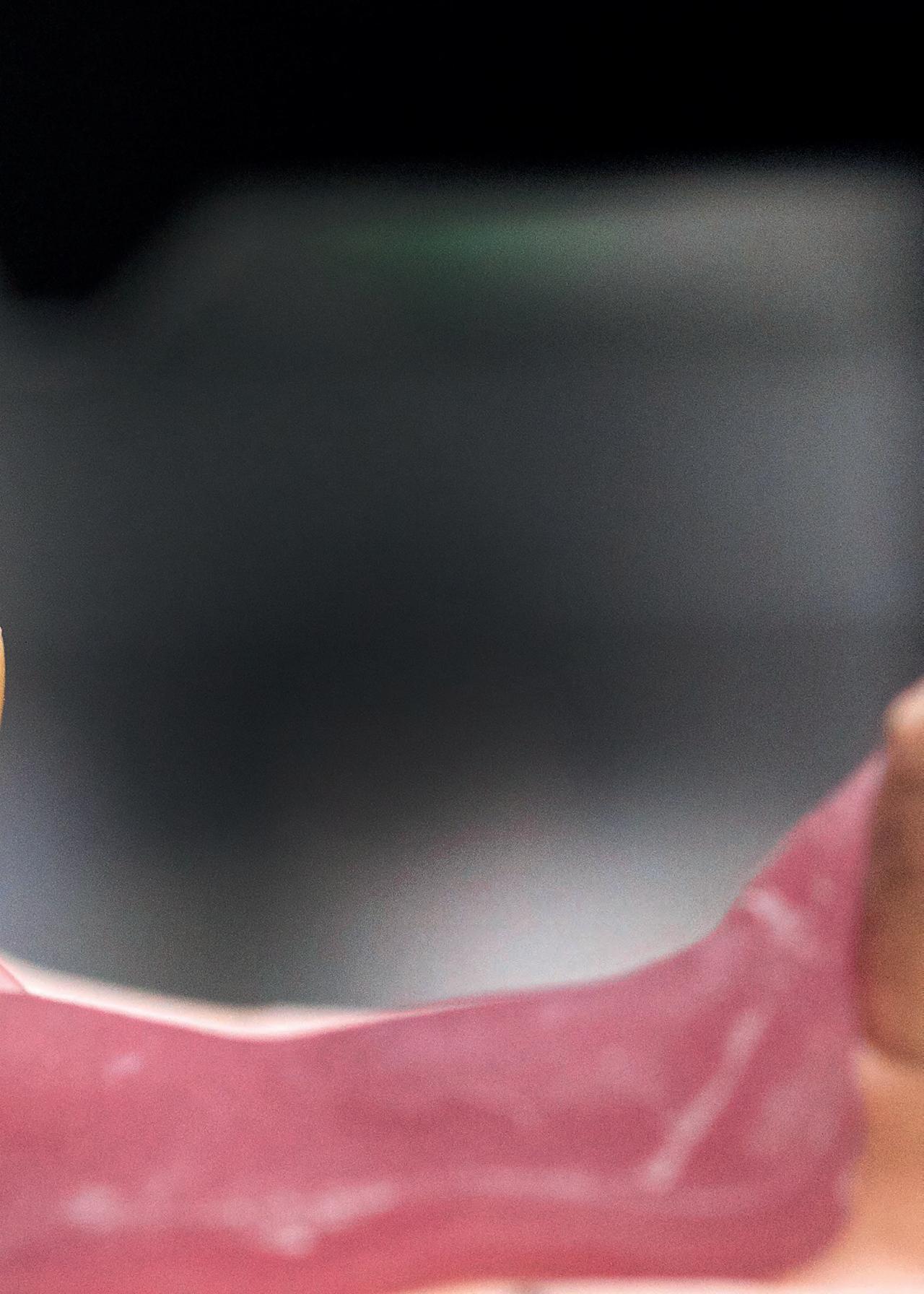
The remaining teeth, 32 and 33, did not show any signs of inflammation.
The set up in the aesthetic zone with VITA MFT Anterior.
MAIN IMAGE: The lingualized VITA MFT Posterior during the set up.


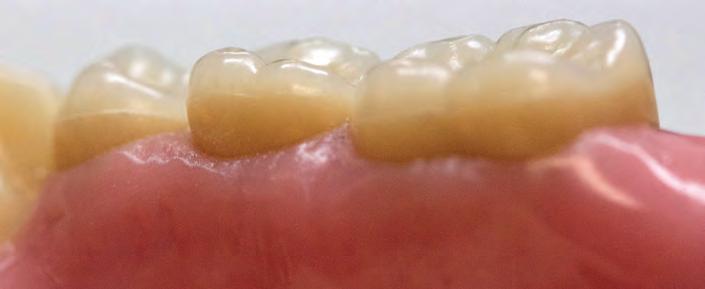


TOP: Easy centric with buccal contacts in the molar region. MIDDLE: The wax set up gave guidance during the clinical try in. 3RD ROW: The lingualized VITA MFT Posterior provides more space for the tongue. 4TH ROW (L): View on the final upper wax set up in the molar region. (R): The finally contoured wax set up in the upper jaw. PRETREATMENT
After anatomic impressions of the upper and lower jaw, models were fabricated on which individual trays were created for the mucodynamic impression. Master models were manufactured to be able to produce fitting bite registration plates with a wax rim to record the position of the mandible in relation to the maxilla and to transfer the mid-line, the canine position, the incisal length and expansion of the buccal corridor. According to the clinical bite registration, the two master models were articulated and the model analysis was performed.
SET UP
VITA MFT Anterior was used for the set up in the anterior area. For a budget denture tooth, the anterior sets are very aesthetic. They are designed naturally in morphology and texture. The anatomical structure is simulated with neck, dentine and enamel layers, which leads to a three-dimensional play of light and colour. Tooth axis and coordinated angle characteristics, according to the aesthetic rules, make a quick match of the front teeth possible. Due to the position of the remaining canine and incisor, all lower teeth were used in addition to the natural incisor 32 to provide stability while eating with the new denture. So altogether, there were five lower central incisors established. The set up was performed edge to edge to the remaining natural teeth to improve the aesthetics of the upper smile line.
In the molar region, the lingualized VITA MFT Posterior easily enabled finding the centric position and establishing buccal contacts, due to the multifunctional occlusal surface design. The lingualization of the teeth offered more space for the tongue and a more stable function on the atrophied jaw ridges. Extra care was also taken during the contouring of the lower lingual aspect to implement space and free movement of

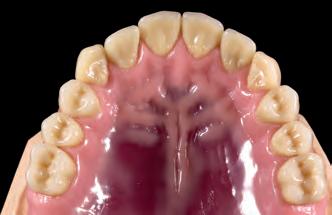

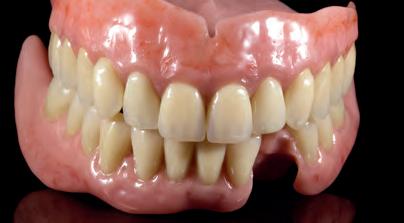

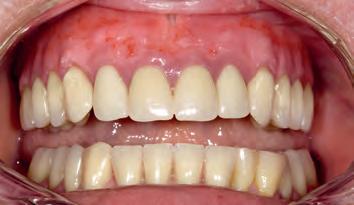

TOP ROW (LEFT): Altogether five lower central incisors were established to offer stability. (MIDDLE): The palatal anatomy was also reproduced meticulously. (RIGHT): Both wax set ups in the articulator. 2ND ROW (LEFT): The upper and lower rehabilitations after their transfer into polymer. (RIGHT): Gingival anatomy was simulated with internal colors. 3RD ROW (LEFT): The new rehabilitation appeared very natural intraorally. (RIGHT): The lifelike appearance and the functional integration of the rehabilitations.
the tongue. During the try in, a final bite registration was taken with the set ups in order to recheck static and dynamic occlusion in the articulator.
POLYMER TRANSFER AND OUTCOME
After a succesfull clinical try in and final anatomical contouring, the rehabilitations were transferred into polymer. First, the set ups were duplicated with hydrocolloid. Then the teeth were cleaned, conditioned and repositioned in the hydrocolloid index. Before the flasking of the denture base with the autopolymerizing and pourable Castdon Resin, internal colours of the DentureArt System (both Dreve Dentamid, Unna, Germany) were applied into the flask to simulate the appearance of the gingival anatomy. After the polymerization, finishing and polishing was performed. The new rehabilitations were inserted intraorally and checked by the practitioner and the patient. Both were very satisfied with the lifelike appearance and functional integration. The patient’s requirements of an economical, aesthetic and functional rehabilitation were all met.
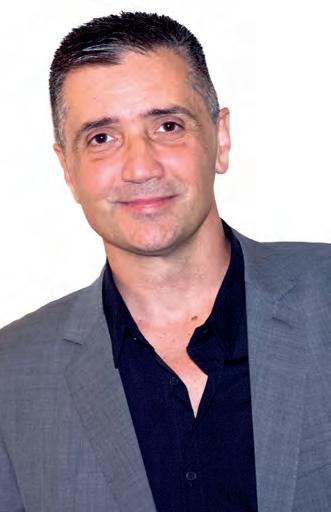
About Denturist Mr Daniel Lavrin
l Daniel firstly qualified as a Dental Technician in Paris (France) and then achieved further post graduate qualifications in denturism with the Ontario College Advanced Diploma for the Denturist (IDEC) Program in Toronto (Canada), he then furthered his education and was awarded his UK Diploma qualification in Clinical Dental Technology via the Royal College of Surgeons of England. This means that not only Daniel is trained to the highest technical and clinical standards, it also ensures that you will be treated in a safe professional manner.
Daniel specializes in making and fitting Dentures. He is committed to patient care and believes in providing a professional, comfortable and caring service.
By working with you and listening carefully to your needs and expectations he is able to design and deliver a personal and bespoke denture service. Unlike a dentist who sends their dentures away to a technician to be made, Daniel will not only see you as a patient, but will actually make your new dentures for you as well.
Having worked in the industry for over 25 years, Daniel can therefore offer an in depth consultation and range of services to suit all your denture needs and budget. You will be seen by a Clinical Dental Technician that has a wealth of experience, knowledge and technical expertise in the construction of Cosmetic and Natural Dentures.










